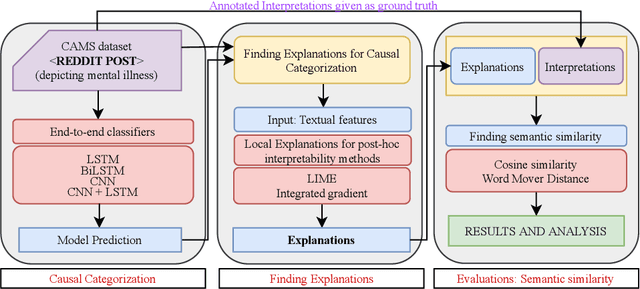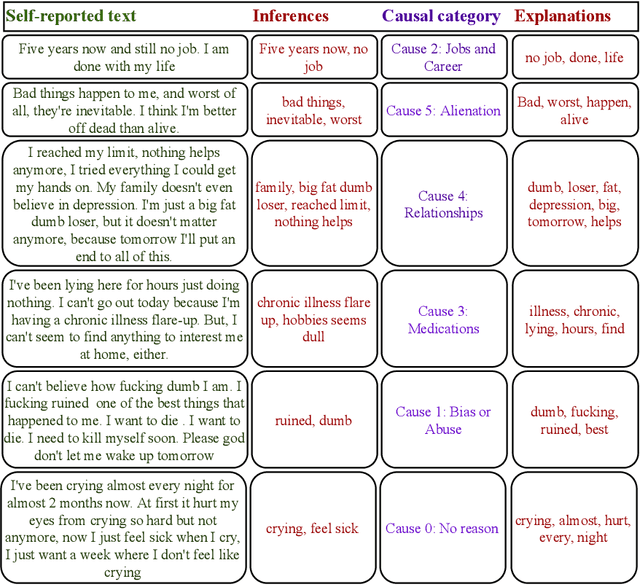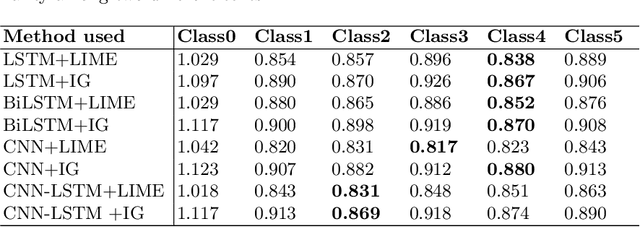Gunjan Saxena
Explainable Causal Analysis of Mental Health on Social Media Data
Oct 16, 2022



Abstract:With recent developments in Social Computing, Natural Language Processing and Clinical Psychology, the social NLP research community addresses the challenge of automation in mental illness on social media. A recent extension to the problem of multi-class classification of mental health issues is to identify the cause behind the user's intention. However, multi-class causal categorization for mental health issues on social media has a major challenge of wrong prediction due to the overlapping problem of causal explanations. There are two possible mitigation techniques to solve this problem: (i) Inconsistency among causal explanations/ inappropriate human-annotated inferences in the dataset, (ii) in-depth analysis of arguments and stances in self-reported text using discourse analysis. In this research work, we hypothesise that if there exists the inconsistency among F1 scores of different classes, there must be inconsistency among corresponding causal explanations as well. In this task, we fine tune the classifiers and find explanations for multi-class causal categorization of mental illness on social media with LIME and Integrated Gradient (IG) methods. We test our methods with CAMS dataset and validate with annotated interpretations. A key contribution of this research work is to find the reason behind inconsistency in accuracy of multi-class causal categorization. The effectiveness of our methods is evident with the results obtained having category-wise average scores of $81.29 \%$ and $0.906$ using cosine similarity and word mover's distance, respectively.
 Add to Chrome
Add to Chrome Add to Firefox
Add to Firefox Add to Edge
Add to Edge